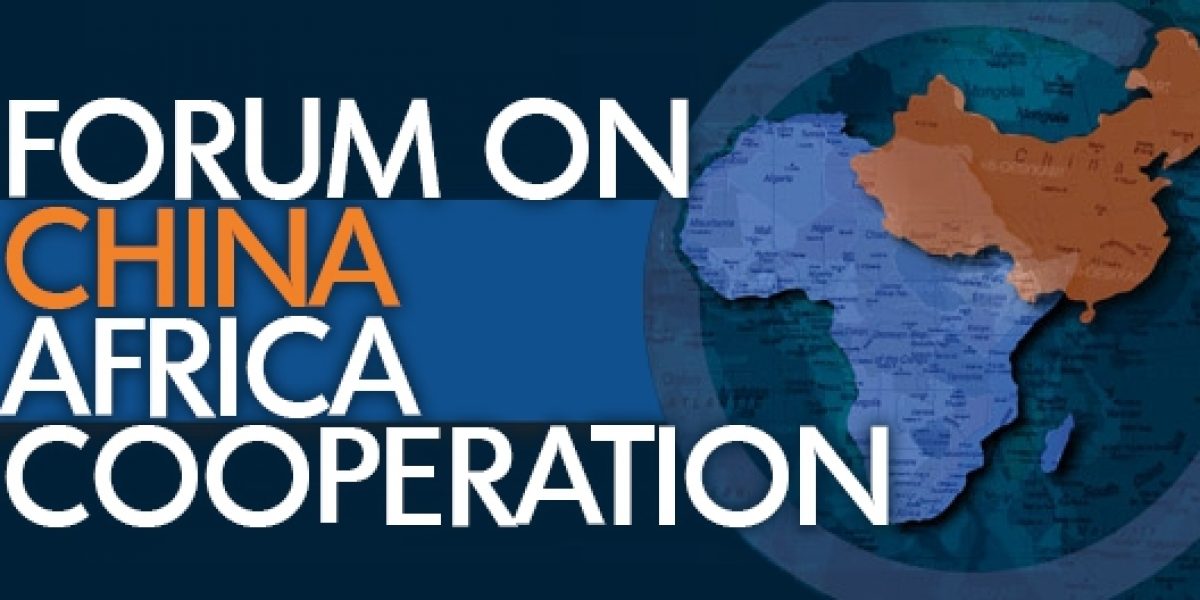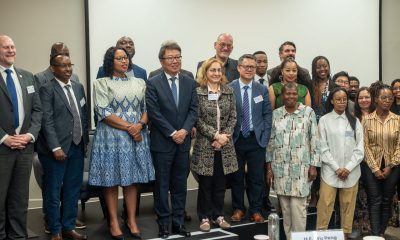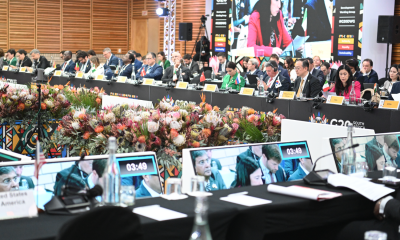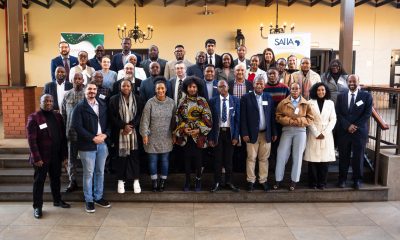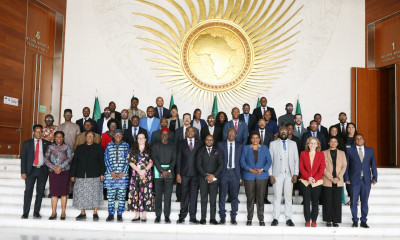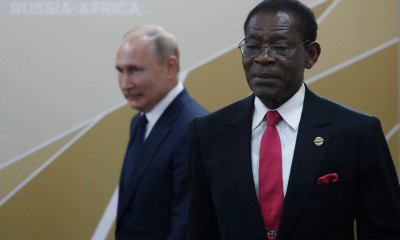Launched in October 2000 in Beijing as a tri-annual collective dialogue platform for co-operation between China and Africa, FOCAC is a signal of the dynamic and expanding nature of China-Africa relations.
Africa and China have forged strong economic relations, particularly since 2009 when China became the continent’s largest trading partner. According to International Relations and Cooperation Minister Maite Nkoana-Mashabane, South Africa is planning to use the Johannesburg Summit to ensure that future FOCAC declarations and action plans are effectively implemented in line with the AU’s Agenda for Regional and Continental Integration and Development. The AU flagship programmes are incorporated in the New Partnership for Africa’s Development (NEPAD) and Agenda 2063, including the First Ten-Year Implementation Plan of Agenda 2063.
FOCAC has become an important platform to assess the broader trends of the Sino-African partnership for the next three years. Against the backdrop of plunging commodity prices and a slowing down of the Chinese economy, it raises questions about the extent to which these shifts affect China’s overall relationship with the African continent.
Read three new articles based on interviews with SAIIA experts: ‘African countries could learn from China’s development practices: experts‘ (Xinhua), ‘Groundwork laid for FOCAC Summit’ (China Economic Net), and ‘Summit raises host’s profile in continent’ (China Daily).
On 3 December 2015, SAIIA and the DFID-ESRC Growth Research Programme (DEGRP) will host a special workshop on ‘China-Africa: a maturing relationship? Change, continuity and resilience.’
Summary of FOCAC and China-Africa relations
In many ways FOCAC is an exemplary form of South-South co-operation, demonstrating the strengths of utilising an incremental and practical approach to tackling development issues of mutual concern. Previous FOCAC and upcoming meetings include:
- 2000 – FOCAC I, Beijing, China
- 2003 – FOCAC II, Addis Ababa, Ethiopia
- 2006 – FOCAC III, Beijing, China
- 2009 – FOCAC IV, Sharm El Sheikh, Egypt
- 2012 – FOCAC V, Beijing, China
- 2015 – FOCAC VI, South Africa.
Over the last 15 years we have seen a rapid increase in bilateral trade between China and the African continent rising from US$ 10.6 billion in 2000 to US$ 91.06 billion in 2009 and more recently in 2014, to US$201.1 billion. Moreover, there has been consistent high-level Chinese delegation visits to African states. Recent examples include Xi Jinping’s 2013 Africa visit (his first major tour as president), while foreign minister Wang Yi and Premier Li Keqiang travelled to selected African countries in 2014 and 2015.
Click here to access SAIIA’s fully-searchable China-Africa Toolkit.
Importantly, the FOCAC process highlights the adaptive nature of China’s engagement with Africa, responding dynamically to emerging developments as was highlighted in 2012. Against the backdrop of the Arab spring and regime change in Libya, the FOCAC V ministerial focussed on growing risks to Chinese economic interests in Africa. Most notably, FOCAC V promoted the China Africa Cooperative Partnership for Peace and Security, which seeks to provide financial assistance, capacity building and other forms of institutionalised support for Africa’s efforts at fostering peace and security on the continent.
Despite China’s official ‘non-interference’ policy, Beijing displayed new thinking regarding the importance of engaging more deeply with stability and peace building in Africa. Significantly, the African Union (AU), in Addis Ababa, was made an observer of the FOCAC process during the ministerial meeting, paving the way for closer forms of collaboration. By early 2015, China and the AU signed an agreement to connect major capital cities through transport routes and collaboration was further expanded in May 2015, when China officially opened its permanent mission to the AU.
This December, the sixth iteration of FOCAC – whose meetings alternate between China and an African partner – will be hosted in South Africa. Against the backdrop of China’s slowing economic growth and falling commodity prices, (termed the ‘new normal’ by president Xi Jinping) and the Ebola outbreak in West Africa, FOCAC VI is expected to widen its areas of focus. Speaking at the University of Cape Town in May 2015, China’s ambassador to South Africa, Tian Xuejun, mentioned that FOCAC is an important platform to jointly implement cooperation initiatives such as the building of the ‘three networks’ (encompassing railway, highway and regional aviation links) and accelerating industrialisation in Africa. He also mentioned six major areas of co-operation – under which industrial co-operation, health co-operation and peace and security are the key priorities over the next three years.
Similar priorities were highlighted during Premier Li Keqiang’s Africa tour in 2014, where during a speech at the African Union, he put forward the ‘4-6-1’ China-Africa co-operation framework (that includes four principles such as respect for sovereignty and each others core interests, achieving mutual benefit and seeking pragmatic cooperation; six major projects – industrial co-operation, financial co-operation, poverty reduction, cultural exchanges and peace and security – and one platform, FOCAC). To ensure that Africa benefits from and leverages the potential of this key relationship more fully, it is important for the African side to ensure that it puts forward proposals based on its own development objectives, on how it sees co-operation evolving within the broader proposed areas.
Below are selected SAIIA background papers and related works that address the current FOCAC priorities:
New set of papers:
- China–Africa Co-operation Beyond Extractive Industries: The Case of Chinese Agricultural Assistance in West Africa
- Learning by Doing: China–Africa Co-operation and State Learning
- Not Beating Around the Bush: Understanding China and South Africa’s Illegal Wildlife Trade
- China–Africa Co-operation: Capacity Building and Social Responsibility of Investments
- Shifting Security Challenges in the China–Africa Relationship
Transport Networks and Industrialisation
What impact could the 21st Century Maritime Silk Road have on South Africa?
At first glance China’s Maritime Silk Road initiative does not appear to reach as far down as South Africa…
Silk, Cinnamon and Cotton: Emerging Power Strategies for the Indian Ocean and the Implications for Africa
The Indian Ocean, once a centre of gravity for the trading nations of Asia, the Gulf and coastal Africa, is on the cusp of a revival…
Development Finance with Chinese Characteristics?
Is the Asian Infrastructure Investment Bank a rival or a welcome complement to existing multilateral financial institutions like the World Bank?
Nationalism with Chinese Characteristics: How Does it Affect the Competitiveness of South Africa’s Mining Industry?
Between 2001 and 2008, the longest sustained commodity boom in recent history, South Africa’s mining industry contracted…
Chinese Resources-For-Infrastructure Swaps: An Escape from the Resource Curse?
Do Chinese resources-for-infrastructure (R4I) swaps reduce or increase the risk that a resource-rich country will fall prey to the resource curse?
‘Oil for Housing’: Chinese-built New Towns in Angola
China has gained a foothold in the African construction sector through the provision of ‘resources for infrastructure’ loans, particularly in mega projects such…
Chinese Economic and Trade Co-operation Zones in Africa: Facing the Challenges
The idea of exporting Chinese special economic zones to Africa was adopted as an official policy within the FOCAC framework in 2006…
China’s Growing Involvement in Chad: Escaping Enclosure?
Relations between Chad and China have expanded and deepened since diplomatic ties were resumed in August 2006, underpinned by Chinese oil…
Chinese Agricultural Investment in Africa: Motives, Actors and Modalities
Against the backdrop of the high-profile re-encounter and reunion between China and Africa since the new millennium, agriculture has been one of the…
Peace and security
China’s evolving approach to the African Peace and Security Architecture
China is on course to becoming more deeply involved in Africa’s security landscape. While the motivation behind Chinese involvement remains…
Riding the Sudanese Storm: China, India, Russia, Brazil and the Two Sudans
What is the nature of Chinese, Indian, Russian and Brazilian engagements in Sudan after 2005, particularly since the establishment of South Sudan in 2011?
China and Liberia: Engagement in a Post-Conflict Country 2003–2013
Once labelled a failed state, Liberia has enjoyed something of a renaissance since it held its first truly democratic elections in 2005. Emerging out of…
The African Union and Security
This year marks the fiftieth anniversary of the founding of the Organisation of African Unity, but it is more fitting to reflect upon its successor, the African Union…
South African Foreign Policy and the UNSC: Assessing its Impact on the African Peace and Security Architecture
South Africa’s two terms as a non-permanent member of the UN Security Council has received limited scholarly attention, yet this is a period that…
Regional Integration
Traditional and Emerging Partners’ Role in African Regional Economic Integration: Issues and Recommendations
Regional integration in Africa is still an active agenda item for African nations and pan-African institutions such as the African Union. Regional integration is motivated…
Benchmarking Foreign Direct Investment in Southern Africa
Foreign direct investment has been a hot topic in South Africa, following the government’s unilateral cancellation of bilateral investment treaties with the European Union…
Puzzling Over the Pieces: Regional Integration and the African Peer Review Mechanism
Regional integration has long been recognised as an important vehicle for Africa’s development; the African Union intends achieving a continent-wide common market by…
The Political Economy of Regional Integration in Africa
SAIIA and the European Centre for Development Policy Management (ECDPM) have released a new set of short case studies that shed light on regional integration in…
Healthcare co-operation
Ebola and Cultures of Engagement: Chinese Versus Western Health Diplomacy
The Ebola outbreak in West Africa has killed more than 3,000 people—so far. It is spreading at an alarming pace, despite the efforts of governments and…
What can the African Union do to foster health development on the continent?
The focus for the 2015 African Union (AU) Summit is the ‘Year of Women Empowerment and Development towards Africa’s Agenda 2063’…
China-South Africa
South Africa and China: The Making of a Partnership
South Africa–China relations are developing at a steady pace, from the onset of formal diplomatic ties in 1998 to the multi-faceted partnership we see today…
FOCAC’s Present and its South African Future
The closing of FOCAC V, the triennial ministerial meeting between China and Africa, marked yet another milestone in the continent’s most dynamic relationship…
South Africa and China: building bridges to beneficiation
The announcement of a joint agreement to open a steel mill in Phalaborwa could signal a new stage in the…
Exchanges
2015: The China Year in South Africa
Observers of China-South Africa relations will have noticed the increasing reference to the ‘China Year in South Africa’…
Ahead of FOCAC and toward Agenda 2063: A timely window for African think tanks to take the lead
With the MDGs drawing to a close, the post-2015 development agenda for the continent is framed around Agenda 2063…
SAIIA attends China-Africa think tanks 10 + 10 partnership
On 21 to 22 October, SAIIA’s chief executive, Elizabeth Sidiropoulos, and researcher, Yu-Shan Wu, participated in the launch of the Think Tank 10 + 10 Partnership Plan in Beijing…

